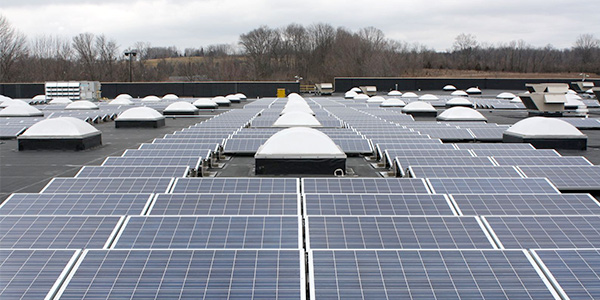By Christen Smith
PJM wants stakeholder feedback about whether its Distributed Energy Resource Ride Through Task Force should pivot in a new direction.
Susan McGill, manager of interconnection analysis, said Tuesday staff will poll members of both the Task Force and the Planning Committee in order to build a solutions package at its next meeting. The leading question, she said, asks stakeholders how comprehensive proposed rules for ride through settings should be, given the varied landscape of PJM’s 13-state grid.
“Originally, the thought was that PJM will develop a standard set of settings we would use across the PJM footprint,” she said. “But there’s a lot of facilities that don’t fall under FERC jurisdiction, and we wouldn’t have any authority to enforce those settings.”
Before the widespread adoption of DERs, the grid was designed to handle one-way power flows, with energy moving from generating plants through the transmission system, before being stepped down to the distribution system and ultimately transmitted to end-use consumers. The growing volume of generation coming off the distribution network is forcing grid operators to rethink the system to accommodate unconventional flows.
PJM said DERs — including solar, battery storage, combined heat and power plants and some wind turbines — currently function on settings designed to respond to unexpected system malfunctions that disrupt power flow. Some sources “ride through” the event, providing much-needed reliability, while others “trip-off” to prevent system damage. Solar panels and other DERs also can’t tell the difference between a transmission fault and a distribution fault, causing inappropriate responses and overstressing the system.
The task force has been considering ways to fix this problem — even going so far as to bring in federal experts to help develop new standards — but McGill said stakeholder feedback so far has been limited. (See DOE Lab to Join PJM DER Integration Effort.)
She said the poll will help PJM decide when settings should be developed following one of the following directives:
- Standard settings that should be used consistently for all DER facilities across the PJM footprint;
- Standard settings that should be used for all FERC-jurisdictional DER facilities across the PJM footprint;
- Recommendations that can be used when the local electric distribution company does not have a standard.
“Some transmission owners are already working standards to fit their unique distribution facilities,” McGill said.
Members will have a week from receipt to answer the poll. Staff will review the answers and use the results to construct a package of standards at the task force’s May 21 meeting.

